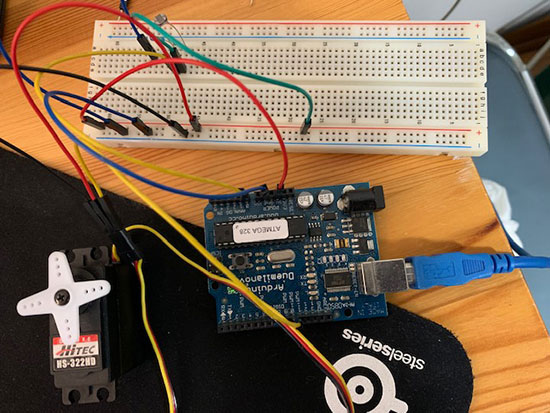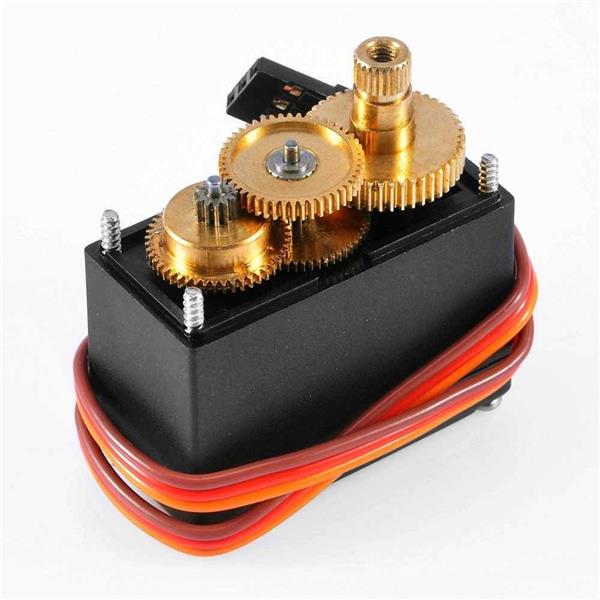
This is particularly useful when we have multiple servo motors. On my own servo, a Feetech Micro 1.3kg Continuous Rotation Servo FS90R, the max speed is: 0.12s/60° when powered with 4.8V 0. We just need to define the pin to which the servo is connect.
#Servo motor arduino code 360 how to#
Hello, Has anyone played around with Parallax 360 degree feedback servo motors and if so would they be willing to post working code here so I and others like myself can get an idea of how to program them, info on this motor. Using Arduino Motors, Mechanics, Power and CNC. The ground wire is typically black or brown and should be connected to a ground pin on the board.

The power wire is typically red, and should be connected to the 5V pin on the Arduino board. I have connected the pin 9 of the Arduino to the servo motor’s signal input.īy using the myservo.attach() function, I let my code know about this so when I modify the servo object, I can see the output on that particular motor. Now lets take a look at the Arduino code for controlling the servo motor. Parallax 360 degree feedback servo motor. Arduino Board Servo Motor 10k ohm potentiometer hook-up wires Circuit Servo motors have three wires: power, ground, and signal.
#Servo motor arduino code 360 full#
I have used this section to attach my servo motor to the servo object I just created and make sure it is stopped. You can also buy continuous servos that can rotate through the full 360 degrees. There is no feed back to know when it has rotated, say, 360 degrees. Instead it is limited to a range of 180, 270 or 90 degrees. You can not control the angle of a continuous servo. Unlike the DC and Stepper motors the Servo Motor does not normally spin a full 360 degree rotation.

This part of the code of the Arduino firmware runs only once as soon as we provide power to the Arduino. The further from the angle of 90 degrees, the faster the continuous servo will rotate. You can name the servo object in any name you want, but make sure you: The research was carried out to overcome the flood problem by using Arduino as a microcontroller which will thoroughly control the ultrasonic sensor as a water. This represents my servo throughout my code and whatever changes I make to this will be reflected on the actual servo. If you forget how exactly you should write this line, Going to Sketch -> Include Library allows you to select the required library and the IDE will automatically add the line for you.


 0 kommentar(er)
0 kommentar(er)
